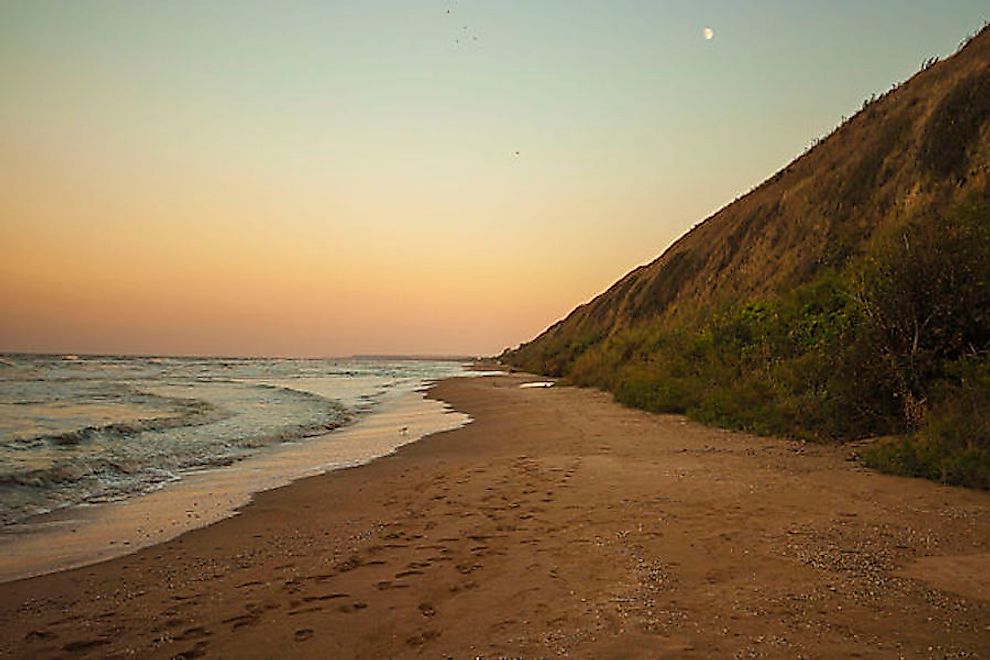
An Overview of the Shallowest Sea in the World
The Sea of Azov is unique for its shallow depth. The sea, located in Eastern Europe, covers an area of 15058 square miles and borders Ukraine, Russia, and the Crimean Peninsula. The sea is a northern extension of the Black Sea and is linked by the Kerch Strait. The sea has a depth of between 30 feet and 46 feet with a volume of 112 square miles. The floor of the sea is relatively smooth and flat owing to deposits of silt, sand, and shells from the inflow of rivers. These deposits have increased the number of bays, spits, lagoons and limans. Russia and Ukraine are the primary users of the sea and have developed an agreement to regulate the activities carried out by each state regarding the sea.
Role as an Important Navigational Route
The Sea of Azov is an important means of transport for goods as well as passengers. Before the 1990s, the sea was used for transporting iron ore from the Kerch peninsula to Ukraine. Construction of the Volga-Don canal in the 1950s saw an increase in the navigation rate of the sea as the canal connected the sea to the interior parts of central Russia. Increased navigation of the sea has seen the building of ports in areas such as Taganrog, Berdyansk, Yeysk, and Mariupol. Excessive navigation of the sea has resulted in accidents such as sinking ships and accelerated pollution, therefore, compromising the integrity of the sea. Navigation in the winter is difficult as the sea accumulates ice.
Coastal Features of the Sea of Azov
The Sea of Azov has a unique set of coastal features such as lagoons, bays and spits, limans. Spits in the sea include the Arabat spit (one of the world’s longest spit stretching to a length of more than 70 miles), the Fedotov Spit, the Obitochna spit and the Achuevsk spit which reach a length of at least 18.6 miles. Limans in the sea include the Molocha and Mius limans. Bays include the Obytochny, Berdyansk, Belosaraysk, Taganrog, Kazintip and Taman bays among others. Some deposits at a particular area of the sea influence the size and shape of these coastal features.
Biodiversity of the Sea of Azov
The Sea of Azov has a unique ecology supporting a diverse range of plants and animals both terrestrial and marine. The shallowness of the sea allows for even mixing of the water, making the temperatures even and conducive for a wide range of marine life. Deposits and inflow from rivers reduce the salinity of the sea while depositing nutrient-rich content that promotes the rapid growth of planktons and ultimately increases the fish population. The sea supports an outstanding 300 invertebrate species and 80 fish species such as sardines, anchovies, sturgeon, perch, herring, sea-roach, and minnow among others. The shores and estuaries of the sea support bird species like the waterfowl, seagulls, swans, herons, sandpipers, cormorants and pelicans. Terrestrial mammals supported by the sea include Muskrats, Martens, the wild boar, foxes wild cats and hares. The presence of green algae makes the sea water appear green. Also found within the sea are yellow algae, diatoms, euglena, zooplankton such as cladocera, benthos such as mollusks, crustaceans, and worms. Along the shores of the sea, plant species such as water lilies, reeds, sedges and Sparganium.
Concerns
Although the Sea of Azov has a rich biodiversity, human activities such as damming of the rivers, overfishing, pollution, and irrigation have led to a decline in the numbers of existing species within the sea.


 Users Today : 544
Users Today : 544 Total views : 469030
Total views : 469030